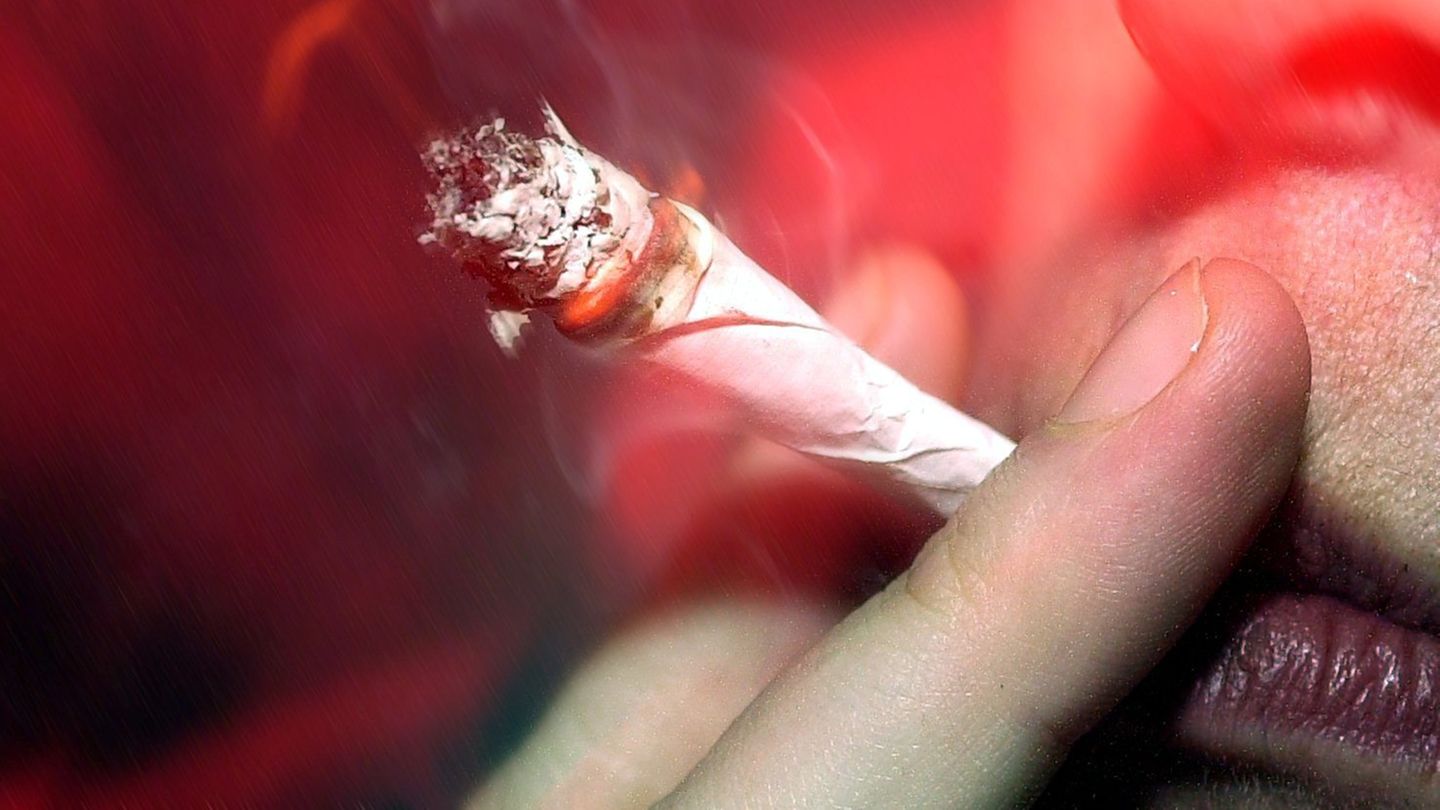Cannabis legalization in Germany is still controversial even after almost two months. Scientists warn of the consequences for children and young people. A recent study confirms the fears again.
Studies have shown this several times that cannabis harms the immature brains of young people. The connection between adolescent cannabis use and psychotic disorders could be even stronger than previously thought, according to a study presented in the journal “Psychological Medicine”. Most adolescents who are diagnosed with a psychotic disorder have a history of cannabis use.
As a rule, perception is impaired in the case of a psychotic disorder, explains Rainer Thomasius, head of the German Center for Addiction Issues in Children and Adolescents at the University Hospital Hamburg-Eppendorf. Your own physical experience is changed, and visual or acoustic hallucinations are also possible. The ability to concentrate and learn is limited, and the ability to feel when feeling happy or sad is dulled. In addition, there is often the feeling of being completely flooded by environmental stimuli.
A psychotic disorder can be completely cured within a few weeks if you abstain from drugs – but there is a higher risk of slipping back into it if you start using drugs again. The effects of schizophrenia, a special form of psychotic disorder, are generally longer and more severe, explains child and adolescent psychiatrist Thomasius. The feeling of being threatened – for example by close relatives – can lead to fatal attacks in extreme cases of schizophrenia.
Joints are more harmful today than in the hippie era
Previous research was largely based on older data, when cannabis was less potent than it is today, which the researchers in Canada believe is the reason for a possible underestimation. The average tetrahydrocannabinol (THC) content of illicit cannabis in Canada increased from about one percent in 1980 to 20 percent in 2018. “New types of cannabis products have also become more popular, including cannabis extracts that contain THC levels above 95 percent.”
Such products are not yet available in Germany, says Thomasius. The level of illegal cannabis in this country is around 15 percent. With the professional equipment of the cultivation associations, which have been legally allowed to produce cannabis since the beginning of April, higher levels are certainly possible. According to the Cannabis Act, the THC content should not exceed 10 percent when the associations are distributed to 18 to 21 year olds – but comprehensive controls are hardly possible for municipalities to implement. According to the text of the law, they are only required “occasionally,” says Thomasius.
Legalize cannabis? The crux of free smoking
01:46 minutes
The dramatic increase in THC content compared to the joints of the 1968s is problematic because consumers often smoke a similar amount of cannabis as before – but in the process absorb far more THC than a user once did. The hemp plant Cannabis sativa contains a total of more than 60 cannabinoids, of which tetrahydrocannabinol is classified as the strongest psychoactive substance. There are receptors throughout the body to which the body’s own cannabinoids, but also THC, dock.
Cannabis doesn’t just damage young people’s brains
According to experts, it is biologically plausible that THC affects the brains of young people: During puberty, the brain is a kind of major construction site and is particularly easy to throw out of balance. According to the research team in Canada, it is assumed that THC influences, among other things, nerve fiber connections and the development of white matter in the brain via the body’s own cannabinoid system.
The known consequences of regular cannabis consumption during puberty include, in addition to the higher risk of psychosis, a drop in IQ values of up to around ten points, explains Thomasius. “If an IQ that is already not that high drops from 90 to 80, then that means a learning disorder.” Comprehension and concentration skills also suffered. In the brain, cannabis consumption during puberty could result in the loss of up to a third of the functional connections in the frontal lobe, which is responsible for functions such as thinking, reason and emotion regulation. The risk of anxiety disorders and depression is also higher.
But it’s not enough that consumers can ruin their own lives and that of their families – other people are also affected, for example through their impaired ability to drive. “In the USA, the number of serious traffic accidents under the influence of cannabis has doubled to tenfold since it was legalized there,” says Thomasius.
Young people are not really aware of such risks, says the doctor. “So far, this has not been adequately communicated at all.” Analyzes showed that the risk perception of health damage caused by cannabis consumption is generally decreasing in the USA and Europe. In addition, young people generally do not have as much self-care and have a lower risk awareness. And the fact that adults are allowed to use something, but young people stay away from it, has never worked.
Clear connection between cannabis consumption and psychosis
Cannabis legalization means trivializing effects and sends completely wrong signals, emphasizes Thomasius. “We can already predict that the incidence of psychosis will increase.” And every such case means a risk of recurrence unless all psychoactive substances are avoided for life. “Once psychosis has occurred, vulnerability to drug use is increased.”
For their study, André McDonald and Susan Bondy from the University of Toronto linked population-based survey data from 2009 to 2012 with health care records up to 2018. The more than 11,000 participants included were between 12 and 24 years old at the start of the study and had not previously had a psychotic disorder.
According to the analysis, five out of six young people (12 to 19 years old) who were admitted to hospital or went to an emergency room for a psychotic disorder during the study reported cannabis use. There may have been under-reporting because recreational cannabis use was still illegal for all age groups in Canada, which could have influenced the information on one’s own cannabis consumption. No clear association was found in young adults (20 to 33 years old).
Genetics also plays a role
It remains true that the vast majority of young people who use cannabis do not develop a psychotic disorder, explained McDonald. However, adolescents who use cannabis are 11 times more likely to develop a psychotic disorder than adolescents who do not use it.
It should be noted that, like previous epidemiological studies, the analysis shows a correlation, not a causal relationship. This means that a reverse connection cannot be ruled out: young people with psychotic symptoms could, for example, have started self-medicating with cannabis before the clinical diagnosis.
Other potentially important factors such as genetics or past trauma were not taken into account in the study. In fact, genetics strongly determine susceptibility to psychosis, explains Thomasius. With such a family history, cannabis consumption is the straw that breaks the camel’s back.
Cannabis has been approved for adults in Germany since April 1st. From July 1st, according to the cannabis law, the drug can be cultivated collectively in special clubs and distributed to club members. Three plants can be grown at home. Experts believe that teenagers will now be able to obtain cannabis much more easily than before.
Source: Stern
I’m Caroline, a journalist and author for 24 Hours Worlds. I specialize in health-related news and stories, bringing real-world impact to readers across the globe. With my experience in journalism and writing in both print and online formats, I strive to provide reliable information that resonates with audiences from all walks of life.




